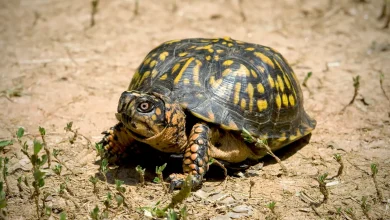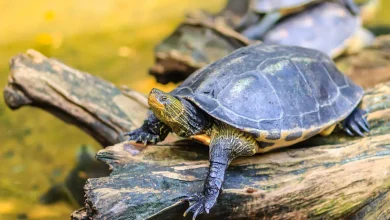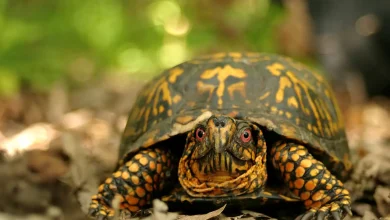Mexican Box Turtle (Terrapene Carolina Mexicana)
The Mexican Box Turtle is a subspecies of the common box turtle endemic to Mexico.
- Terrapene Carolina Mexicana (Gray, 1849)
Table of Contents
Distribution
The Mexican Box Turtle is found in Eastern Mexico, within the states of San Luis Potosi, Tamaulipas, and Veracruz. It is rare to find one outside of Mexico, and their export from the country has been banned. Their presence in the pet trade is next to non-existent. Some were imported during the ’70s and ’80s before the ban, and those rare few that are bred in America seldom end up on the market.
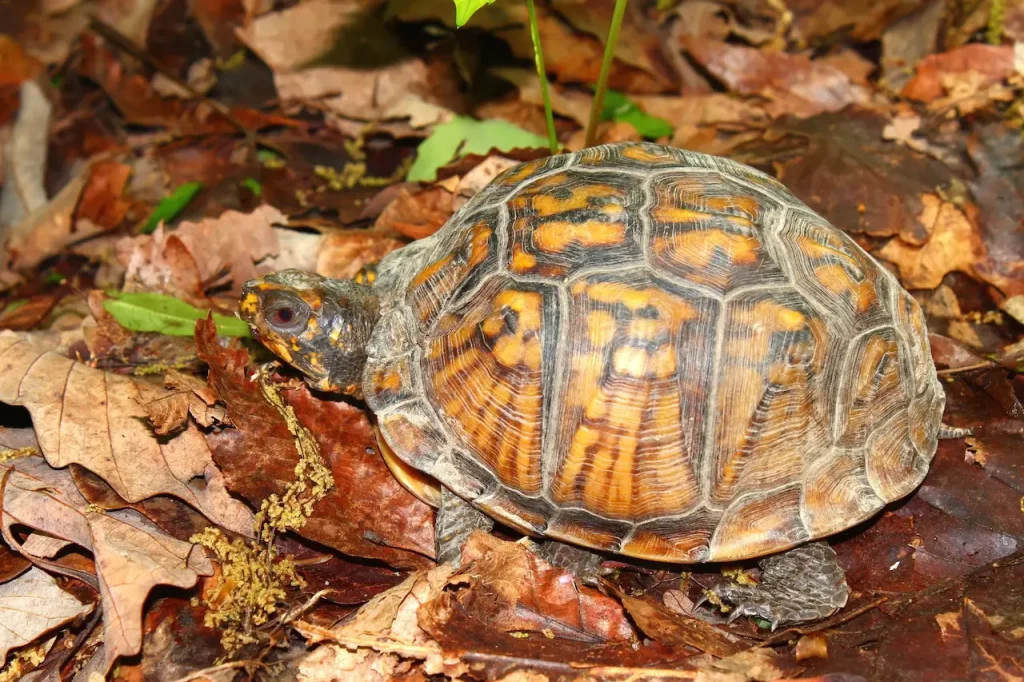
Mexican Box Turtle Habitat
Mexican Box Turtles will typically make a home near water, in a bushy area. They like to have brush for concealment and nearby water is crucial for a turtle’s health. Box turtles will often soak in water for hours at a time. Standing bodies of water also draw bugs which are a big part of a turtle’s diet.
They will rarely move more than two hundred meters from their home. If removed from their home, they will endlessly try to find their way back to it.
Body
Mexican Box Turtles have a long, dome shaped carapace. Their shell has a brown color and they reach about six to eight inches in size. The shell can sometimes have bright yellow markings; bright markings on box turtles can fade over time when kept in captivity with limited access to direct sunlight. Their skin can have bright yellow or red markings. These lighter spots are often found on the sides of the face.
As with all box turtles, the Mexican Box Turtle has a hinged shell in which it can conceal itself entirely.
Their appearance is similar to that of the Three-toed Box Turtle.
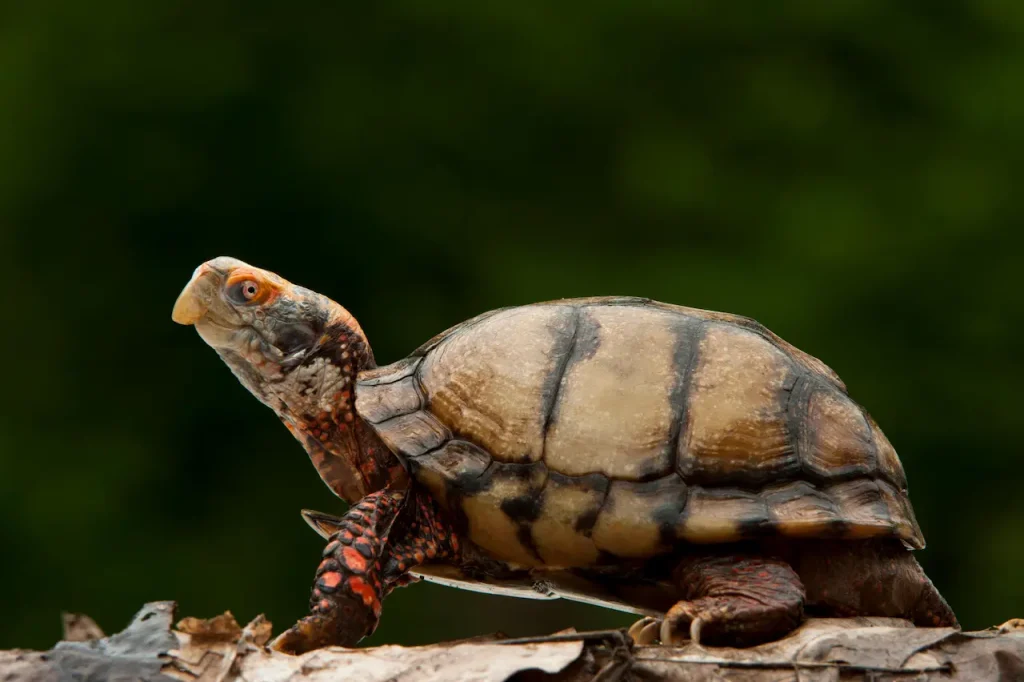
Sexing a Mexican Box Turtle
A useful tip for sexing Mexican box turtles is to look at the bottom of their shell. The males often have a concave curve to the bottom of their shell, as this helps them mount the female during mating. Females have a flatter bottom shell by comparison.
What Does a Mexican Box Turtle Eat?
Mexican box turtles are omnivores, which means they eat both meat and plant matter. For meat, they most often turn to insects as they are the easiest to catch and kill. Beatles, slugs, snails, and crickets are all good examples. Box turtles often go to nearby water to search for these insects.
For plant matter, they eat some vegetables, fruit, berries, and even fungus. Mexican Box Turtles can eat certain types of poisonous mushrooms in their area as a defence mechanism. Eating a Mexican Box Turtle can be fatal due to the poisonous mushrooms that are potentially in their system.
How Old can a Mexican Box Turtle Get?
Box turtles in the wild can live up to a hundred years old. It’s unfortunate that those in captivity vary greatly in how long they can live, but rarely make it close to a hundred.
Keeping Mexican Box Turtles as Pets
The hardest thing about keeping a Mexican Box Turtle as a pet is finding one in the first place. They cannot be imported from Mexico. Mexican Box Turtles living in America were either imported before the ban or were bred from those that were. If you find a Mexican Box Turtle for sale, do your research carefully to make sure the turtle was obtained legally.
If you do acquire a Mexican Box Turtle, you must live somewhere warm so you can keep their environment warm.
Housing a Mexican Box Turtle
When keeping any reptile as a pet, an important thing to keep in mind is their climate. Reptiles cannot regulate their body temperature and need to have their environment produce their ideal temperature for them.
The Mexican Box Turtle comes from a climate that is roughly 65F at night and over 75F during the day. This can be achieved using a heating lamp. To give your turtle more control of their body heat, you can place the lamp to one side of their enclosure. This way, they can move closer to or further away from the lamp as needed.
Box turtles also like to have shade, bedding they can burrow into, and shallow water they can soak in. This helps them stay cool if it gets too hot, and helps them feel safe and comfortable.
For box turtles, many people use enclosures instead of cages. An outdoor enclosure can be ideal, but this depends where you live. If the area you live in is too hot or too cold, keeping your turtle outdoors can be hazardous to their health.
An enclosure should be sturdy and tall, so they cannot climb out of or burrow/chew their way out of it. Glass containers can be bad for them because they may endlessly press against it in an attempt to get out. If they can’t see the outside world, they’ll be less compelled to escape.
Your turtle will need to have access to fresh water at all times, both to drink and soak in. Change it daily.
Feeding a Mexican Box Turtle
As mentioned earlier, Mexican Box Turtles are omnivores. They should be fed a balance of both meat and plant matter. Young box turtles will sometimes eat more meat because the protein can help with growth. Once they reach adulthood, it’s important that their diet is more balanced.
There are many feeder insects you can get at a pet store for your turtle, such as crickets and grubs. For plant matter they enjoy vegetables like lettuce, and also fruits and mushrooms. Make sure they’re getting a balanced diet, and don’t just feed them their favourite treat all the time.
Parasites
Parasites can be hard to deal with in reptiles because they can get under the scales. Be sure to take your box turtle to the vet often, so this potential problem can be dealt with sooner rather than later. Parasites can carry diseases and are a major risk factor to the health and longevity of your pet.
References
- Fritz, Uwe; Peter Havaš (2007). “Checklist of Chelonians of the World”. Vertebrate Zoology 57 (2): 198–199.
- Gray,J.E. 1864. Observations on the box tortoises, with the description of three new asiatic species. Ann. Mag. Nat. Hist. (3) 13: 105-111
